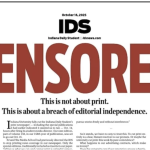Birmingham City Council
BJCTA Touts Ridership Increases in Update to City Council

Birmingham’s transit authority since May 2024 has seen major increases in ridership as well as more reliable and faster services, while operating under its current strategic plan, executives told city leaders Tuesday.
“This plan is changing how we are running business and mobility in this city,” Birmingham Jefferson County Transit Authority Executive Director Charlotte Shaw said during a presentation to the City Council Tuesday.
Under the authority’s 70/30 plan, it is adjusting its fixed-route coverage from 100% of the city to 70% and then serving the remaining 30% of the city with microtransit, an on-demand transportation service riders can hail by phone or mobile app.
Residents appear to be embracing the microtransit services, with ridership increasing by 61% from June 2024 to May 2025, according to BJCTA leaders.
Transit authority officials also said the Bus Rapid Transit routes, which connect neighborhoods from the Woodlawn Transit Center in the east to the Crossplex Transit Center in the west, had a 31% increase in ridership during that same time.
But some residents have criticized the decrease in fixed-route coverage. Two routes were canceled — Route 7, which served Fairfield; and Route 48, which ran through the South Powderly area.
During Tuesday’s presentation, Councilor Hunter Williams raised questions about the efficacy of the area’s microtransit services, particularly for riders hoping to cross municipalities. As an example, he asked how a resident would use microtransit to get from the West End of the city to Mountain Brook.
Both Shaw and planning manager Brittnee Thomas said residents can’t do that.
“Okay, so that answer is a problem, and this is something that I’ve been talking about for a long time now,” Williams said. “The whole way that microtransit works is if people can actually utilize it to get to a place of employment, if they can utilize it to get to a doctor’s office. With all these municipal boundaries that we feel that we need to constrain people with, there’s 32 of them in this county. That’s problematic. … What is public transportation if you’re not able to utilize it across municipal lines?”
Shaw said she welcomed the chance to educate Williams and other council members on how microtransit differs from ride-sharing services such as Uber or Lyft.
“It doesn’t work like that anywhere else in the industry,” Shaw said. “Every industry that introduces microtransit as an option for mobility works in zones. If you want to cross zones, then you’re looking at a different system. … We would love for municipalities to cross, but it’s siloed, because it’s based on budget. If you want 100 percent microtransit, that’s $150 million a year, and that’s challenging for any agency to work with.”
Shaw invited the council to a luncheon at the BJCTA to discuss in detail the 70/30 plan as well as common misconceptions about what the authority can accomplish within its budget.
“We don’t get state funding. Two hundred billion dollars a year is made available for transit industries, for state funding; we don’t get one dime,” Shaw said.
The lack of state funds isn’t specific to Birmingham. A 1952 state constitutional amendment bars any gas tax revenue from being spent on anything besides building or maintaining roads or bridges.
Other changes in the 70/30 plan also were discussed Tuesday, including:
- Removing high-cost stops on Route 14, the Idlewild Palisades route.
- Improving the frequency from one hour to 45 minutes on routes 5, 6, 14 and 40.
- Rerouting the Magic City Connector to Central Station.
Looking Ahead
Tuesday’s presentation also included the authority’s goals for the future. Those include:
- Extending the BRT to East Lake as well as adding a new north-south BRT route from Homewood to North Birmingham.
- Establishing mobility hubs for two neighborhoods designated by the Regional Planning Commission of Greater Birmingham as areas of persistent poverty. Those two hubs are planned for Ensley at Avenue E and 18th Street as well as the North Birmingham Shopping Center. Officials say these hubs help connect frequently used transit networks to microtransit services and suburban connectors.
- Implementing four new connector routes that will connect underserved communities to healthy food providers. Those proposed routes include:
- Route 94: Pratt City, Ensley, Five Points and the West BRT.
- Route 95: Five Points West, Powderly and Lakeshore Parkway.
- Route 96: Tarrant, Kingston, Woodlawn, Gate City and Eastwood.
Carwash Moratorium, World Police and Fire Games
The council also Tuesday voted unanimously to extend the moratorium on new automated car washes in the city for an additional 90 days. City officials say these businesses have impeded Birmingham’s ability to redevelop walkable, pedestrian-focused corridors.
Councilors also approved a funding agreement to provide $58,500 in financial incentives toward hosting the 2025 World Police and Fire Games, being held June 27-July 6.
The games attract more than 8,500 first responder athletes from across the world. The athletic competitions will be held at 39 venues across the Birmingham metro area and will feature 67 sports, including, firefighter challenges, archery, baseball and pickleball.


